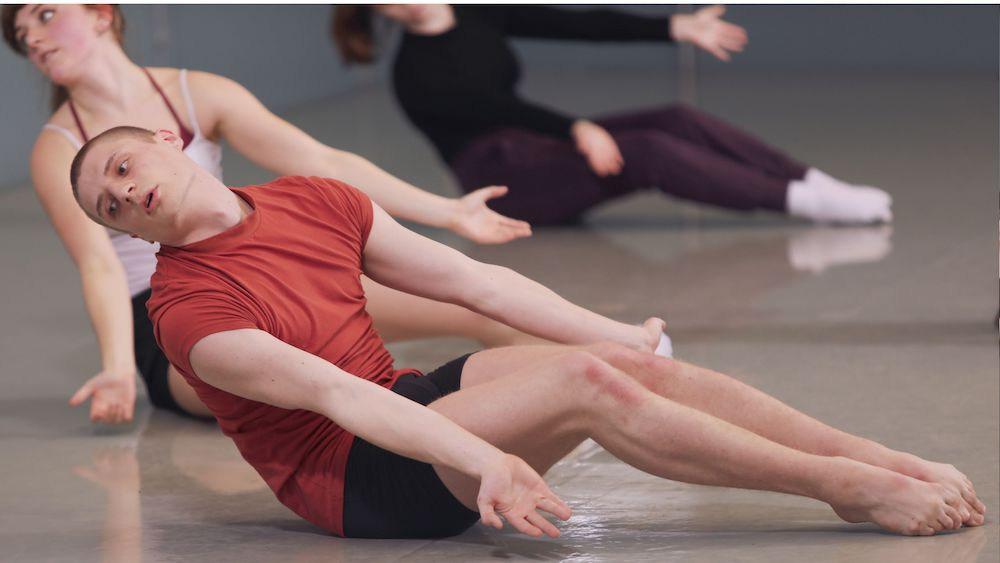Dance Techniques to Empower Your Movement and Expression

Dance Techniques to Empower Your Movement and Expression
Dance techniques are the foundational elements that elevate every dancer’s performance, allowing for an expressive exploration of movement and emotion. From classical forms to contemporary styles, understanding and mastering various dance techniques is essential not just for aesthetic appeal but also for personal growth and self-expression. As individuals engage with diverse dance styles, they unlock new ways to connect with their inner selves, often finding that dance can serve as a form of therapy, releasing emotional burdens and promoting overall well-being. The journey of improving dance skills is not merely about perfecting steps but also about discovering freedom in dance and what it signifies to each person. By embracing unique movements and connections, dancers can communicate stories and feelings in ways that resonate deeply with audiences and themselves alike.
Movement principles in dance encompass a variety of approaches that contribute to a dancer’s ability to convey emotions and narratives through their bodies. This art form is not limited to technical proficiency; it is a vibrant means of expression and personal discovery. Engaging in dance can become a therapeutic outlet, enabling participants to release pent-up emotions while refining their abilities. The vast array of dance forms provides endless opportunities for individuals to explore their creativity and identify their unique voice within a chorus of movement. Ultimately, the act of dancing facilitates both skill enhancement and profound emotional liberation, leading to a richer, more fulfilling dance experience.
The Art of Dance Techniques
Dance techniques are foundational to expressing movement and emotion through the body. Each style, whether ballet, hip-hop, or contemporary, has its own set of techniques that dancers must master to effectively convey messages and feelings. Understanding the nuances of these techniques allows dancers to improve their skills and experiment with various dance expressions. This exploration not only enhances their performances but also encourages personal growth and creativity in their art.
By adopting various dance techniques, individuals can discover new ways to express themselves. Techniques that involve both structured choreography and improvisation can empower dancers to find their unique dance voice. Whether through the precision of ballet or the freedom of street dance, these techniques open doors to deeper connections with one’s self and the audience, highlighting the importance of embracing different styles in developing a well-rounded dancer.
Finding Freedom in Dance
Dance is a profound form of expression that can offer a sense of freedom that transcends everyday constraints. For many, the dance floor becomes a sanctuary where worries dissipate, allowing individuals to express their authentic selves. This liberation is particularly evident during freestyle dance, where spontaneous movement fosters a deep connection with one’s inner emotions, making it a vital practice for mental clarity and emotional release.
Moreover, the freedom found in dance can significantly contribute to emotional healing and wellbeing. Dance as therapy is an emerging field that underscores how movement can facilitate emotional expression and processing. In providing a safe space for individuals to explore their feelings through dance, participants can uncover layers of their identity and tap into wellsprings of joy and creativity that may have been suppressed.
Embracing Dance as Therapy
The concept of dance as therapy has gained traction in recent years, emphasizing the psychological and emotional benefits of movement. This specialized form of therapy uses dance to help individuals process emotions and trauma in a supportive environment. Participants of all ages and backgrounds can find solace and healing through structured dance activities that empower them to explore their feelings in a non-verbal manner.
Through dance therapy, individuals often report feeling more in tune with their bodies and emotions. This practice not only promotes physical health but also contributes to mental wellness by fostering self-expression and creativity. As participants engage in movement, they may experience a sense of liberation, allowing them to confront emotions that may have previously felt overwhelming. It shows how deeply intertwined dance and mental health can be.
Exploring Dance Styles
The variety of dance styles available today allows individuals to explore different expressions of artistry. From the fluid elegance of contemporary dance to the rhythmic beats of hip-hop, each style represents a unique cultural background and emotional resonance. Dancers who seek to broaden their repertoires can find inspiration in various global dance forms, from traditional folk dances to modern street performances.
Moreover, learning different dance styles can significantly enhance a dancer’s versatility. As they become proficient in various techniques, they can better express diverse themes and narratives. Each style’s distinct requirements encourage dancers to push their boundaries and improve their overall skills, ultimately enriching their performances and enhancing their stage presence.
Improving Dance Skills through Practice
Continuous practice is essential for improving dance skills and achieving mastery in various dance forms. Dancers who dedicate time to their craft are not only honing their techniques but also developing a deeper understanding of rhythm, timing, and spatial awareness. Regular practice enables individuals to experiment with new choreographies and movements, fostering an environment for growth and creativity.
Moreover, engaging in consistent training encourages muscle memory and physical conditioning, which are crucial for more advanced dance techniques. Through disciplined practice, dancers can refine their performance quality, from their posture to their emotional conveyance. This ongoing commitment sustains their passion for dance and facilitates their journey towards artistic excellence.
The Joy of Dance Expression
Dance expression serves as a beautiful outlet for emotions and creativity, allowing individuals to communicate feelings that words often cannot capture. Dance can translate deep-seated emotions into movement, creating a visual narrative that resonates with audiences. This ability to convey feelings through dance fosters a profound connection between the performer and the viewer, enriching the cultural fabric of the art form.
Moreover, dance expression invites participants to explore personal stories and cultural histories. Through movement, dancers can honor their heritage and share unique perspectives, making dance a powerful medium for storytelling. This exploration not only enriches the performance but also makes space for diverse narratives within the dance community.
Shouting to Release Stress
Incorporating vocal expressions, such as shouting, into dance can be liberating. Oftentimes, dancers may carry stress and tension that hinders their performance. By engaging in the act of shouting, they can release pent-up emotions, making room for fluid movement and creativity. This practice not only improves the emotional state but also encourages dancers to approach their craft with a more relaxed mindset.
The idea of using the voice as a tool while dancing brings an exciting dynamic to the performance. Dancers who let loose with a shout invite spontaneity into their routines, creating a sense of jubilance and freedom. This joyful expression helps break down the barriers of perfectionism in dance, reminding participants that the ultimate goal is to enjoy the experience and connect with their bodies.
Dance as a Means to Be Seen
Dance, in its essence, is a medium through which individuals seek visibility and affirmation. For many performers, the stage becomes a space to assert their identity, showcasing their stories and struggles. This desire to be seen is crucial in dance, as artists navigate the complexities of culture, community, and individuality through their performances.
Moreover, understanding the significance of visibility in dance can help both dancers and audiences appreciate its cultural implications. Each movement tells a story, inviting viewers to engage with diverse experiences and perspectives. This connection fosters a sense of community and understanding, reinforcing the importance of representation in the dance world.
Cultural Significance in Dance
The rich tapestry of dance is intricately woven with cultural significance. Every dance style, from traditional folk dances to modern interpretive forms, carries with it the essence of its origins and the stories of its people. Dancers can honor their cultural heritage by performing traditional dances, which serve as vital links to their history and identity.
Understanding the cultural relevance of dance also invites a respectful exchange of artistic practices across different communities. As dancers engage with various styles and techniques, they contribute to a broader appreciation of global art forms. This exchange enriches the dance community as a whole, fostering connections that transcend geographical and cultural boundaries.
Frequently Asked Questions
What are effective dance techniques for expressing emotion?
Effective dance techniques for expressing emotion include dynamic body movements, facial expressions, and improvisation. Styles like contemporary and jazz emphasize personal expression, allowing dancers to communicate feelings through movement. Techniques such as breaking out of rigid forms to explore fluidity can enhance emotional depth in dance performances.
How can I improve my dance skills with different dance styles?
Improving dance skills through various dance styles involves consistent practice, incorporating diverse techniques such as ballet for strength and precision, hip-hop for rhythm and timing, and modern dance for expressive movement. Joining dance classes or workshops in different styles further enhances your technique and adaptability.
Can dance as therapy help with mental health?
Yes, dance as therapy can significantly improve mental health. By encouraging self-expression and emotional release, it serves as a tool for exploring feelings and relieving stress. Techniques used in therapeutic dance often promote physical movement and emotional exploration, providing a cathartic experience that contributes to overall wellbeing.
How do I find freedom in dance while learning new techniques?
To find freedom in dance while learning new techniques, focus on the joy of movement rather than perfection. Allow yourself to experiment with different expressions and styles. Techniques such as improvisation and creating your own choreography can facilitate a sense of liberation as you integrate structured skills with your personal dance voice.
What are some tips for dancing with confidence in front of an audience?
Dancing with confidence in front of an audience involves mastering various dance techniques to build skill and familiarity. Regular practice, focusing on stage presence, and adopting a mindset that prioritizes enjoyment over judgment can enhance your self-assurance. Engage with the audience through eye contact and expressive movements to connect authentically and confidently.
| Key Point | Details |
|---|---|
| Dance with Abandon | Dance like nobody’s watching, focusing on personal expression rather than judgment. |
| Cultural Influences | In Mali, djine foly allows dancers to enter a trance, expressing deep spiritual joy. |
| Finding Release | Release pent-up emotions through loud expressions during dance to enhance the experience. |
| The Importance of Intent | Dance becomes a way to communicate feelings and stories, akin to writing an essay. |
Summary
Dance techniques play a vital role in enhancing personal expression and emotional release through movement. Embracing the idea of dancing as if nobody is watching allows dancers to explore their creativity without the constraints of judgment. Techniques like those found in djine foly illustrate the spiritual connection and catharsis achievable through dance. Ultimately, the practice of dance is not just about the steps but involves tapping into deep emotional reservoirs. Hence, mastering various dance techniques can lead to a profound transformative experience.
